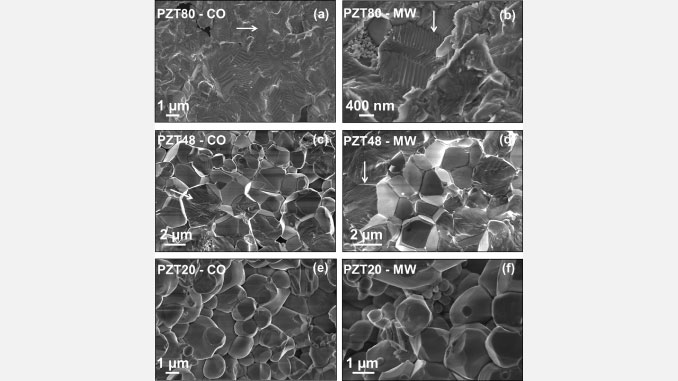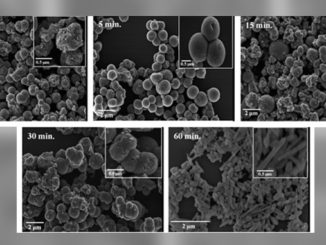
Writers: Mayra D. Gonçalves, Flavio L. Souza, Elson Longo, Edson R. Leite, Emerson R. Camargo
Keywords: PZT; Chemical synthesis; Dielectric response; Sintering; Ceramics
Abstract: Highly reactive lead zirconate titanate powders (PZT) with different compositions were successfully synthesized by the oxidant-peroxo method (OPM) and used to prepare dense ceramic samples with composition near to the morphotropic phase boundary (MPB) sintered at 1000 °C for 2 h using a tubular conventional oven and a commercial microwave system. Crystalline phases were identified in the powder and ceramic samples by X-ray powder diffraction and FT-Raman spectroscopy at room temperature. The fractured surface of the ceramic sample showed a high degree of densification with fairly uniform grain sizes. Dielectric constants measured in the range from 30 to 500 °C at different frequencies (1, 10 and 100 kHz) indicated a normal ferroelectric behavior regardless of the sintering method. Samples sintered by a microwave radiation (MW) method and composition near to the MPB region showed a maximum dielectric constant of 17.911 and an anomalous high Curie temperature of 465 °C.




